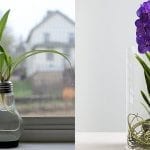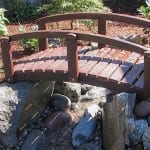
Bring Your Water Feature to Life with a Water Garden
A water feature is an excellent choice for giving your garden that special ambiance you’re looking for. There’s just nothing like the cool sparkle and soothing sounds of water to tickle your senses and dissolve your worries. There’s much more to a water feature than just water, though.
Planting a water garden will take your water feature to the next level design-wise, and even help you keep the water healthy. Aquatic plants such as water lilies are more than just a pretty face–they also help keep algae at bay.
Read on to learn about 4 types of water plants that a perfect for a water garden and what they can do for you.
Surface Plants
The very popular hardy water lily is a surface plant. These plants have leaves and/or flowers that float on the surface of the water, but are rooted in the soil.
The floating part of the plant blocks the sun, reducing algae growth below the surface. While the tropical water lily flourishes only in the warmest climates, the hardy water lily can grow pretty much anywhere in the U.S.
This easy-to-grow plant comes in just about any color except blues and purples, and does well as a container plant.
Other surface plants: yellow floating heart, water hawthorn, lotus, and the distinctive variegated four-leaf water clover.
Floating Plants
Floating plants are not rooted in the soil and are free to float around the surface of the water. Like surface plants, floating plants reduce algae growth by blocking sunlight.
Floating plants include floating hearts, mosaic plant, water lettuce and parrot’s feather.
Bog Plants
Bog plants, also called marginal plants, live at the edge of a water feature or in shallow water. Wild cattails at the edge of a pond are an example of a bog plant.
These plants reduce algae growth by consuming some of the nitrogen in the water that the algae needs.
Bog plants include pickerel rush, which is hardy and easy to grow, cardinal flower, dwarf cattail and horsetail rush.
Submerged Plants
Submerged plants stay below the surface of the water, which makes them easy to overlook. Don’t underestimate them, though–these plants keep your water feature healthy by oxygenating the water and consuming nitrogen, which helps keep fish and other water plants healthy and inhibits algae growth.
Submerged plants include anacharis, jungle vall, cabomba and hornwort.
Clean Up with Wet & Forget
If you do end up with algae in or around your water feature, let Wet & Forget take care of the problem for you.
For surfaces near the water garden:
- Mix 1 part Wet & Forget with 5 parts water in a pump-up garden sprayer. Spray any adjacent plants down with clean water, or cover them. Thoroughly saturate the stained area with the Wet & Forget solution, and allow 4 to 5 hours to dry before the chance of rain.
- For the inside lining of the water feature: Fill a garden sprayer with 1 part Wet & Forget and 5 parts water. Drain the water feature and remove the plant pots. Allow the inside of the water feature to dry completely, then saturate with the Wet & Forget solution. Do not use Wet & Forget in water features that contain fish.












